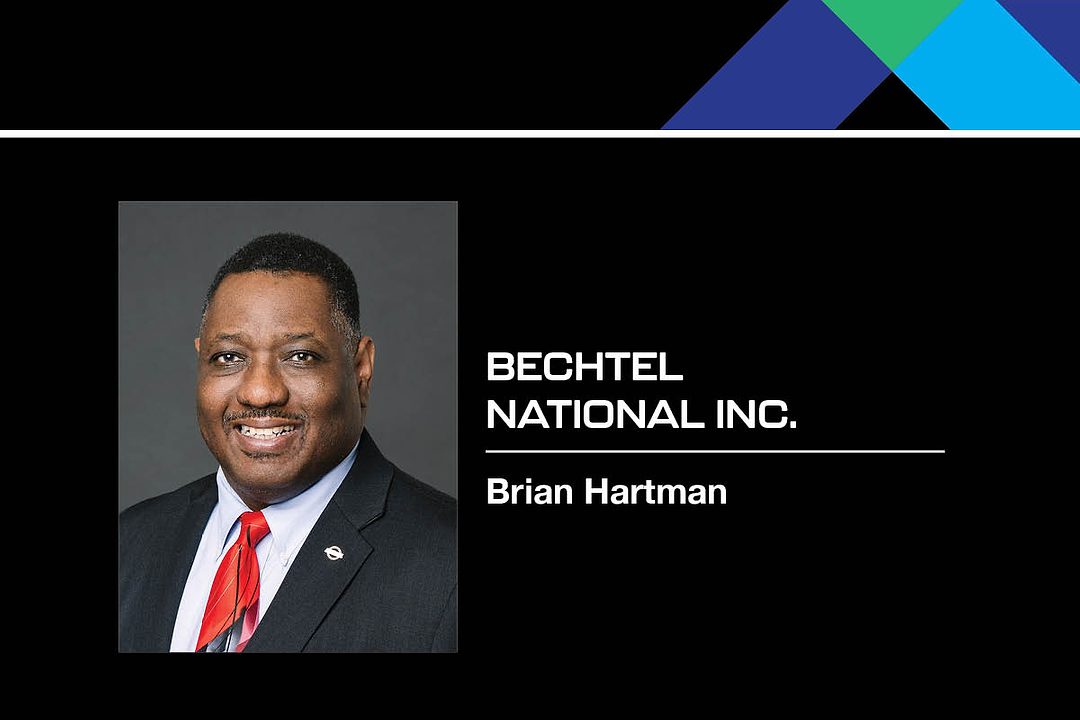
Home » Progress and safety at the vit plant remain a focus
Hanford 2025
Progress and safety at the vit plant remain a focus

April 14, 2025
The Waste Treatment and Immobilization Plant (WTP), better known as the vit plant, marked 2024 as a consequential year in the mission to protect the community and Columbia River from Hanford tank waste.
Our technical mission is clear: to vitrify, or immobilize in glass, radioactive waste stored in underground tanks at the Hanford site. In 2024, we achieved significant milestones that continue to bring us closer to full-scale operations. Designed and commissioned by Bechtel National Inc. for the U.S. Department of Energy (DOE), the vit plant exemplifies innovation, teamwork and an unwavering dedication to safety.
Advancing the mission
Last year began with a critical achievement – heating our second Low-Activity Waste (LAW) Facility melter to its operational temperature of 2,100 degrees Fahrenheit. With both melters running simultaneously, we reached a key step toward sustained operations.
By midyear, we successfully filled and poured “clean” test glass from Melter 2 and gained proficiency in key tasks such as measuring, sample testing and placing lids on containers. We also introduced our first batch of tuning feed into Melter 1. Tuning feed – a mixture of powdered glass-forming materials, water and sodium hydroxide – helps test and support processing equipment to ensure we meet the highest safety standards.
Rounding out the year, the team completed the cold commissioning management assessment, a thorough evaluation confirming the plant’s readiness to start cold commissioning testing. Cold commissioning is a series of tests performed to verify the functionality, operability and safety of the plants’ systems without using radioactive materials. Coupled with DOE approval to begin operations with simulants, this crucial milestone sets the stage for transitioning to hot commissioning later this year. To learn more about cold and hot commissioning, we invite you to visit commissioning.hanfordvitplant.com.
The High-Level Waste (HLW) team made significant progress toward design completion. Prioritizing safe, compliant and efficient delivery, the team achieved all 10 objective milestones for our DOE customer – many ahead of schedule. The HLW team was highly focused on activities directly related to “de-risking,” or completing the closure of legacy issues, implementing lessons learned from the Direct-Feed Low-Activity Waste, and incorporating operational insights into the design phase. The HLW team continued progress on weathering in the facility by completing key concrete placements and installing shield doors.

Waste Treatment and Immobilization Plant team members adjust jack bolts during Melter 2 heat-up. As the Low-Activity Waste Facility melter reached 2,100-degrees Fahrenheit, crews adjusted jack bolts over several weeks. Jack bolts are compression bolts within the melter that must be adjusted throughout heat-up to keep gaps between refractory blocks closed.
| Courtesy Bechtel National Inc.Commitment to safety
Safety remains the cornerstone of our operations. As a participant in DOE’s Voluntary Protection Program, the vit plant fosters a strong safety culture through initiatives such as zero-accident councils and safety logbooks.
In 2024, innovative safety programs reduced injury rates to 75% below the industry average. A standout initiative at the vit plant was the industrial hygiene team’s introduction of physiological monitoring, which tracks employees’ vital signs – such as heart rate and body temperature – during high-risk tasks. This program helps detect fatigue and stress, reducing the risk of injury. Our team earned the vit plant its second Voluntary Protection Program Star of Excellence award. Their commitment to each other’s well-being demonstrates that progress and safety truly go hand in hand.
Community impact
Beyond our mission, Bechtel and the vit plant team take pride making a positive impact in the Tri-Cities community. In 2024, we supported education, families, health, safety and arts and culture through a variety of initiatives. Notable contributions in 2024 included:
- Bechtel supported STEM education and women in engineering through events like Engineers Week, where our team volunteered and mentored students inspiring future careers in engineering. We also funded scholarships at Washington State University Tri-Cities and supported students pursuing careers in the trades at Tri-Tech Skills Center.
- The vit plant team donated more than $177,000 to the United Way of Benton & Franklin Counties, supporting vital programs and services for families that address youth homelessness, educational challenges, and food insecurity in our community.
- In honor of Bechtel’s late vit plant project director, Val McCain, the team raised over $30,000 in support of the Special Olympics’ annual Polar Plunge. These funds support those with developmental disabilities.
- Bechtel sponsored the Tri-Cities Diversity and Inclusion Council’s Celebration of Community, Diversity and Culture, a free event showcasing the region’s rich cultural heritage.

In support of Engineers Week, Bechtel employees volunteered their time to spark curiosity and creativity in students across Tri-Cities. Each year, Bechtel employees visit classrooms to lead hands-on activities and share insights into engineering careers.
| Courtesy Bechtel National Inc.Our community impact extends beyond supporting the nonprofits. We collaborate with businesses of all sizes, both locally and nationally, to achieve our mission. In fiscal year 2024, we awarded $107 million to small businesses. By supporting these small businesses – the backbone of thriving regions – we reinforce our commitment to driving economic growth and building stronger communities.
Looking ahead
Our progress in 2024 reflects a collaborative effort involving the DOE, One Hanford contractor partners, and the local community. With both melters operational and significant advancements across the project and in the HLW Facility, we are on track to safely vitrify Hanford’s legacy waste.
Our work is more than a technical achievement – it is a commitment to environmental stewardship, community support, and a legacy of safety and innovation.
One team, one mission, One Hanford.
Brian Hartman is the project director for Bechtel National Inc.’s Hanford Waste Treatment and Immobilization Plant.
Hanford
KEYWORDS April 2025
Related Articles
Related Products





